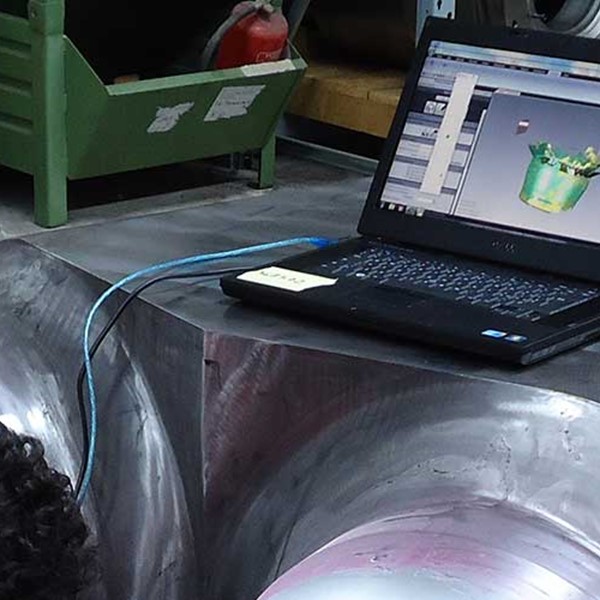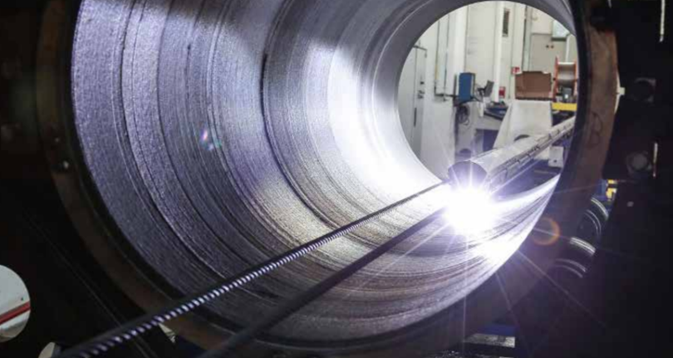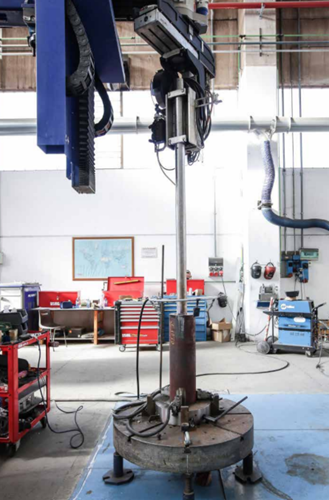

Weld overlay: a comprehensive guide to the process
On this page we will delve into:
- What is weld overlay
- How weld overlay works
- Why do we use weld overlay?
- Benefits and applications
- Materials
What is weld overlay
Weld overlay is a specialized cladding technique used to deposit a layer of corrosion (or wear) resistant material onto the surface of base components such as pipes, fittings, forgings, and flanges. Instead of manufacturing the entire component from expensive alloys, weld overlay allows a strong base material (like carbon or low-alloy steel) to be reinforced with a protective layer of INCONEL the majority of the times. This approach ensures long-term reliability in demanding environments while optimizing costs.
How weld overlay works
Weld overlay involves fully automated welding processes where filler material is melted and bonded onto the base metal. M.E.G.A. employs advanced technologies such as TIG hot wire processes (including the proprietary TIGer system).This method ensures high-quality welds, low dilution rates, and excellent deposition efficiency. The TIGer processuses dual tungsten electrodes forming a single arc, delivering higher deposition rates, lower arc pressure, and superior metallurgical bonding.
Horizontal cladding

Horizontal cladding is performed using longitudinal twin TIGer technology, allowing two layers to be applied in a single run. CNC-controlled systems with integrated pre-heating and cooling devices guarantee consistent quality along the internal or external surfaces of long products such as pipes. Real-time monitoring through dual cameras ensures precision during welding operations.
Vertical claddings

Vertical cladding is achieved with SPXCNC TIGer equipment, which uses an endless rotating head. This design allows the workpiece to remain stationary on the ground while the welding torch rotates around it. The innovation makes it possible to clad even highly asymmetrical components. The equipment can handle internal diameters as small as 38 mm and product lengths up to 2,000 mm, offering flexibility across a wide range of applications.
Why do we use weld overlay?
Weld overlay is primarily used to extend the life of components exposed to corrosive, high-temperature, or abrasive environments. Instead of replacing entire pipeline elements, weld overlay restores or enhances the performance of existing components. It is especially valuable in oil & gas, petrochemical, offshore, subsea, power generation, and nuclear applications, where equipment reliability is critical to safety and efficiency.
Benefits and applications
The main benefits of weld overlay include:
- Cost-effectiveness: Use of less expensive base materials with a thin protective layer of high-grade alloys.
- Superior resistance: Enhanced protection against corrosion, erosion, and wear.
- Flexibility: Ability to clad complex geometries and both internal and external surfaces.
- Extended service life: Reduced need for component replacement, minimizing downtime.
- Customization: Weld overlay can be applied to forgings, fittings, flanges, and pipes up to 12 meters in length.
Applications range from cladded buckle arrestors and barred tees for subsea installations to large-diameter pipes and pressure vessel components used in power plants and refineries.
Materials
M.E.G.A. provides weld overlay with a wide range of Corrosion Resistant Alloys (CRA), including:
- Nickel-based alloys: Inconel 625® (UNS N06625), Incoloy 825® (UNS N08825), Hastelloy C276® (UNS N10276), Hastelloy C22® (UNS N06022).
- Cobalt alloys: Stellite®.
- Stainless steels: Series 300 and 400.
- Other alloys as required by customer specifications.
The base materials typically include carbon-manganese steels, low-alloy steels, high-alloy steels, martensitic and ferritic stainless steels. This wide material compatibility ensures weld overlay can be adapted to virtually any industrial application.
At M.E.G.A., we combine advanced weld overlay technology with decades of expertise to deliver safe, reliable, and cost-effective solutions for the most demanding industries, such as fittings for oil & gas industry.
Contact our technical team today to discuss your project requirements and discover how weld overlay can extend the life and performance of your components.

